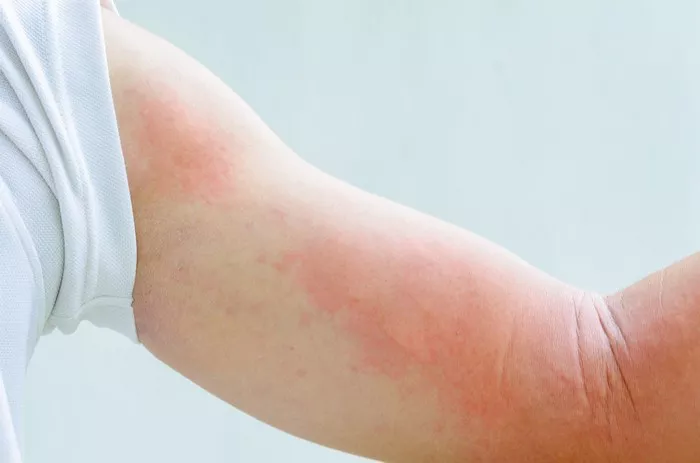Shingles, also known as herpes zoster, is a painful rash caused by the varicella-zoster virus, the same virus that causes chickenpox. Understanding how long shingles is contagious is important for preventing its spread, especially to individuals who may be at risk. This article will provide detailed information on shingles, its contagiousness, and guidelines from the Centers for Disease Control and Prevention (CDC).
What Is Shingles?
Shingles occurs when the varicella-zoster virus reactivates in a person who has previously had chickenpox. It typically appears as a painful rash that can blister and form crusts. Shingles can affect anyone who has had chickenpox, but it is more common in older adults and those with weakened immune systems.
Symptoms of Shingles
Symptoms of shingles can vary but often include:
Pain and Burning: Many people experience pain, itching, or burning sensations before the rash appears.
Rash: The rash usually develops on one side of the body and forms clusters of blisters.
Fever and Fatigue: Some may also experience flu-like symptoms such as fever, fatigue, and headache.
How Is Shingles Spread?
Shingles is not spread from person to person in the same way that chickenpox is. However, the varicella-zoster virus can be transmitted through direct contact with the fluid from the blisters of a shingles rash.
Risk of Transmission
Direct Contact: If someone who has never had chickenpox or the chickenpox vaccine comes into direct contact with the shingles rash, they may contract chickenpox, not shingles.
Airborne Transmission: The virus can also spread through the air if someone breathes in droplets containing the virus, but this is less common.
How Long Is Shingles Contagious?
According to the CDC, shingles is contagious from the time the rash appears until the blisters have crusted over. This typically takes about 7 to 10 days.
Timeline of Contagiousness
Before the Rash: Shingles can start being contagious a few days before the rash appears, as the virus begins to reactivate.
During the Rash: The person is most contagious while the blisters are present and have not yet crusted over.
After the Blisters Crust: Once all the blisters have crusted over, the person is no longer contagious.
CDC Guidelines on Contagiousness
The CDC provides clear guidelines regarding shingles and its contagiousness. These include:
Isolation Recommendations
Stay Away from Vulnerable Populations: Individuals with shingles should avoid close contact with pregnant women, infants, and individuals with weakened immune systems until the rash has crusted over.
Cover the Rash: Keeping the rash covered can help prevent the spread of the virus.
Hygiene Practices
Wash Hands: Frequent handwashing is essential, especially after touching the rash or blisters.
Avoid Sharing Items: Do not share personal items such as towels or bedding until the rash has healed.
Preventing the Spread of Shingles
Preventing shingles and its spread involves several strategies:
Vaccination
The CDC recommends the shingles vaccine for adults aged 50 and older. The vaccine can significantly reduce the risk of developing shingles and its complications.
Avoiding Triggers
Some factors can trigger the reactivation of the varicella-zoster virus, including:
Stress: High levels of stress can weaken the immune system.
Illness: Other infections or illnesses can also trigger shingles.
Immunosuppressive Conditions: Conditions that weaken the immune system increase the risk of shingles.
Awareness of Symptoms
Recognizing the early symptoms of shingles can lead to timely treatment. If you suspect you have shingles, consult a healthcare provider as soon as possible.
Treatment for Shingles
If you develop shingles, prompt treatment is essential to reduce the severity and duration of the symptoms. Treatment options include:
Antiviral Medications
Acyclovir, Valacyclovir, and Famciclovir: These medications can help reduce the severity of the outbreak and speed up recovery when taken early in the course of the illness.
Pain Management
Pain Relievers: Over-the-counter pain relievers such as ibuprofen or acetaminophen can help manage pain.
Prescription Pain Medications: In severe cases, stronger pain medications may be necessary.
Topical Treatments
Calamine Lotion: Applying calamine lotion can help soothe itching.
Cool Compresses: Using cool, damp cloths on the rash can alleviate discomfort.
Complications of Shingles
Shingles can lead to several complications, particularly in older adults and individuals with weakened immune systems:
Postherpetic Neuralgia (PHN)
What It Is: PHN is a condition characterized by severe pain in the area where the shingles rash occurred, lasting long after the rash has healed.
Impact: This pain can be debilitating and affect the quality of life.
Other Complications
Vision Problems: If shingles affects the eye, it can lead to vision loss.
Bacterial Infections: The blisters can become infected with bacteria, requiring additional treatment.
When to Seek Medical Attention
It is essential to seek medical attention if you suspect you have shingles, especially if:
- The rash spreads to your face or eyes.
- You experience severe pain or discomfort.
- You have a weakened immune system or other health concerns.
Conclusion
Understanding how long shingles is contagious is crucial for preventing its spread and protecting vulnerable individuals. According to the CDC, shingles is contagious from the time the rash appears until all the blisters have crusted over, usually about 7 to 10 days.
By following guidelines on isolation, practicing good hygiene, and considering vaccination, you can help prevent the spread of shingles. If you suspect you have shingles, consult a healthcare provider for appropriate treatment. Awareness and prompt action can make a significant difference in managing this condition and protecting those around you.
Related topics:


























